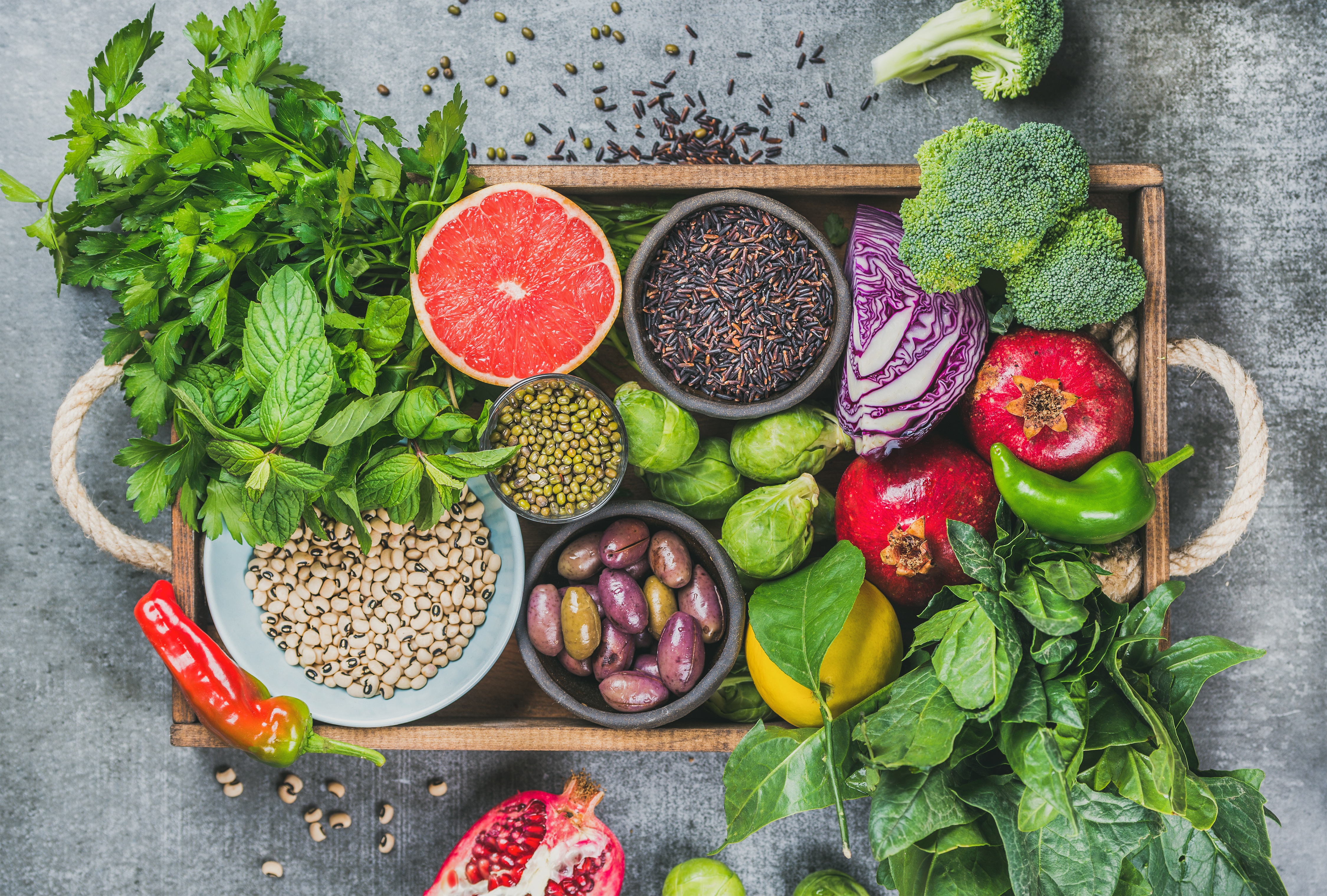Thinking of becoming a vegetarian? October is Vegetarian Awareness month and a good time to learn about what it takes to become vegetarian and why you might want to consider it. Read on to learn about various levels of vegetarian diets, the benefits of going meatless and ways to ease into eating vegetarian.
Choose the type or level of vegetarian diet that might be best for you.
Cutting out all animal products—yogurt, cheese, ice cream, eggs, chicken, beef, poultry and others—might seem a little extreme and too difficult to change all at once. Many have found it easier to make changes like these gradually over time. The chart below illustrates the different levels of vegetarian diets and which animal products each level consumes.
| Level | Meat Products | Eggs | Dairy |
| Flexitarian | Occasionally | Yes | Yes |
| Semi Vegetarian | Only Fish/Poultry | Yes | Yes |
| Pescatarian | Only Fish | Yes | Yes |
| Lacto-ovo Vegetarian | None | Yes | Yes |
| Ovo Vegetarian | None | Yes | None |
| Lacto Vegetarian | None | None | Yes |
| Vegan | None | None | None |
Benefits for going meatless
The Academy of Nutrition and Dietetics states “that a properly planned vegetarian diet is healthful, nutritionally adequate and provides health benefits in the prevention and treatment of certain diseases”.1 A well planned vegetarian diet offers lower levels of saturated fats, cholesterol and increased fiber along with antioxidants and phytochemicals found in fruits and vegetables. These attributes could help you manage your blood cholesterol levels, lower inflammation and help to prevent heart disease.
Suggestions for Easing into Vegetarianism
- Cut back on certain meats by testing out a flexitarian or semi vegetarian approach
- Join the #meatlessmonday trend as a jumpstart to becoming vegetarian
- Go meatless for breakfast and lunch only
- Only eat meat when visiting restaurants and don’t cook meat at home
Will I get enough protein?
Vegetarians can easily meet their protein needs by eating a variety of plant foods throughout the day. The protein you get from animals can be replaced. Some easy substitutions that are high in protein include beans and lentils, nuts and seeds, soy products like tofu and tempeh, and wheat gluten also called seitan. Try adding beans and/or quinoa to your salads, protein powder to your smoothies or nut butters to your fruit. Hummus, nuts and edamame make great snacks as well.
Vegetarian Resources
If you are ready to join in the celebration and explore the different ways you can experiment with vegetarianism, here are some resources that may help.
- Visit your local grocery store to see all the available vegetarian products.
- Check out websites like the Vegetarian Times or the Vegetarian Resource Group—both are great resources for cooking tips and articles.
- Consult a Registered Dietitian if you need more help in getting started on your vegetarian journey and learn how a vegetarian diet can benefit you personally.
In good health,
Jan
References:
- Position Paper from the Academy of Nutrition and Dietetics: Vegetarian Diets, Journal of the Academy of Nutrition and Dietetics . 2016;116(12):1970-1980.
